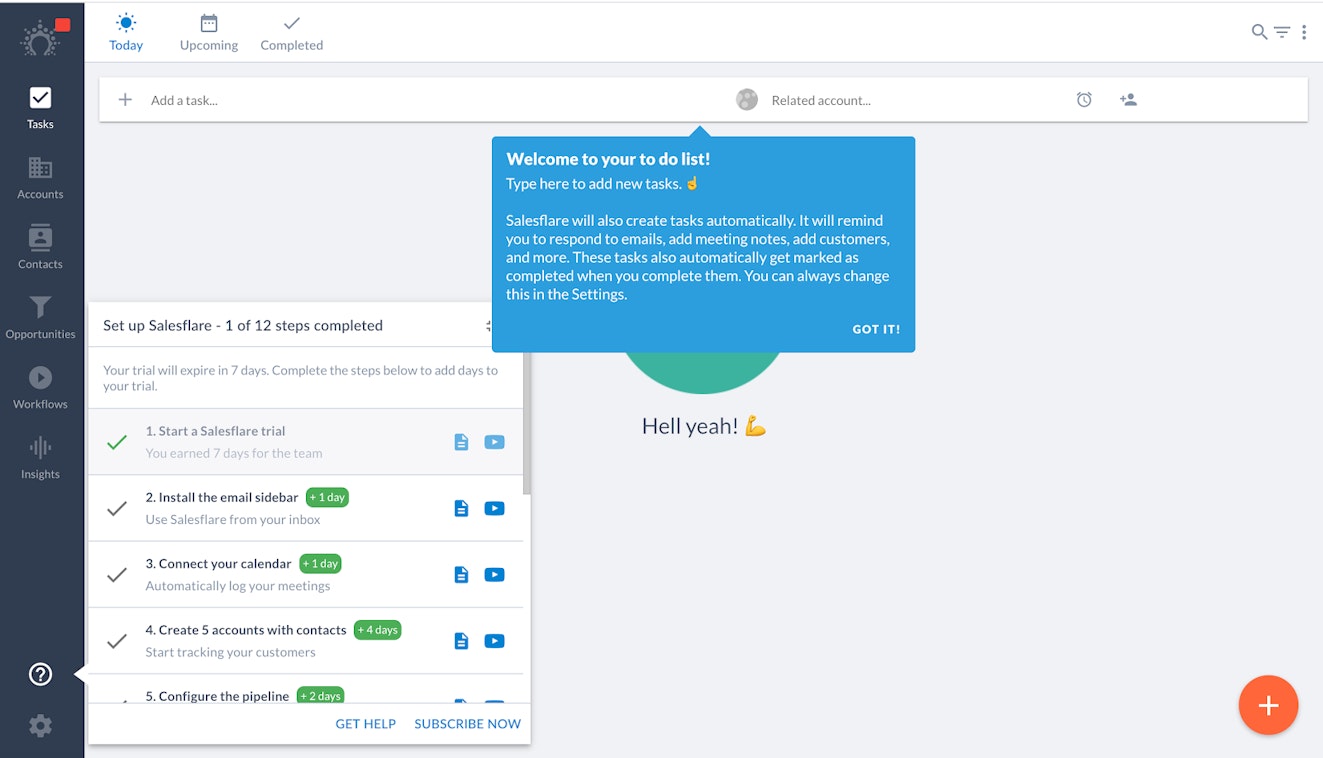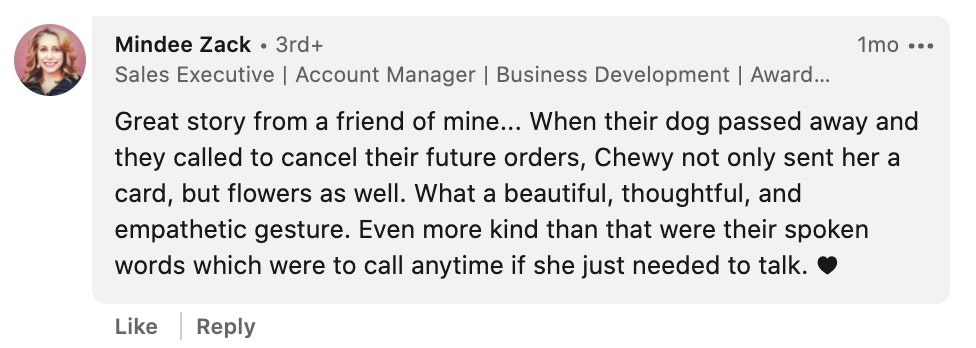When Salesforce set out to identify the most customer-centric businesses in the world, they needed a way to quantify something that wasn’t easily measurable.
Being customer-centric means focusing every aspect of your business on the needs of your customers, which might mean doing something that is right for the customer but jeopardizes sales, profits, or efficiency. But that mindset is not something that’s easy to measure directly.
Salesforce surveyed customers to see which organizations excelled across the following six categories:
Easy to do business with.
Anticipates customers’ needs.
Cares about customers.
Offers relevant products and services.
Honest with the public.
Delivers exceptional customer service.
Businesses that ranked higher in these categories are considered more customer-centric, meaning they keep their customers front and center in their decision making. And that’s important, because brands that offer a “superior customer experience bring in 5.7 times more revenue than their competitors."
If you want to become more customer-centric, focusing on one of these themes will point you in the right direction. The following six customer centricity examples showcase the different ways organizations are putting their customers first.
1. Salesflare: Easy to do business with
Making it easy for your customers to succeed is a hallmark of customer-centric businesses. Eliminating roadblocks and friction takes work, but it pays off when your customers love doing business with you and continue to recommend you to friends and family.
Salesflare has put a lot of effort into designing an easy-to-use CRM, which is highlighted by their frictionless onboarding process.
When you sign in, you can choose to walk through the tooltips on your own time, following a to-do list to get set up. Each step offers links to help documentation and video tutorials, so customers can choose their preferred method of learning.

This attention to detail has brought Salesflare a number of fans and great reviews.
Bring this principle into your own business: Customer Effort Score is a great metric to measure how difficult customers find it to do business with you. Combining insights from this survey with “dog-fooding” (using your own product) will reveal opportunities to make things easier.
2. Asana: Anticipates customers’ needs
Everyone loves that magic moment where a business offers you something you didn’t even realize you needed. It feels like magic, but in fact, anticipating customers’ needs isn’t about mind reading. It’s about executing on a thoughtfully designed customer journey while listening to what customers want.
Asana does this very well through a five-part Voice of Customer (VoC) strategy. They’re constantly listening for and sourcing customer feedback about what to build next.
Once they have the feedback, they take time to understand what the customer is really after. Only then can they develop, launch, and iterate on new functionality with the customer in mind.
"VoC is a process with collective input," explains Michael Nguyen, Head of Customer Journey at Asana. "We’re a customer-obsessed company, so when we start the Listening part of VoC, the customer is who we listen to first. For us to listen to the customer, our starting point is the customer-facing teams of Asana.”
That strategy has built a delightful product that customers find extremely useful.
Bring this principle into your own business: Build customer feedback into your product development process so that you can anticipate what your customers need. Create a customer journey map that shows your customers’ next steps for each interaction; that way you can always stay two steps ahead of them.
3. Nature’s Path: Cares about customers
The biggest cause of churn or disloyalty is due to the fact that 68% of customers feel that companies don’t care about them. For companies like Nature’s Path, that leaves an opportunity to stand out as a customer-centric business.
For example, when Nature’s Path discontinued their maple cinnamon waffles, they probably didn’t think anyone would really notice. But for Jerico, a boy with severe autism, those waffles were the only thing he wanted to eat. His distressed mom put out a call for help, and Nature’s Path responded.
Not only were they able to locate and ship her the last six cases of waffles available, they also set their research and development team to work converting their commercial recipe for home use so Jerico didn’t have to go without. That’s the sign of a business that truly cares.
Bring this principle into your own business: Empower your frontline teams with the means to care. That means having the space to adjust policies when needed (e.g., giving a refund outside of the normal time period) or put in extra time helping a customer with something special. When agents are stuck following scripts and sticking to narrow policies, it’s easy for customers to feel uncared for.
4. 3M: Offers relevant products and services
3M is a company known for its innovative products that solve specific customer problems. This commitment to customer-centric solutions has provided 3M with consistent returns.
To continue in their mission to innovate, 3M has opened Innovation Centers where customers can visit, collaborate on design, and test out new products. 3M defines their centers as “a space where people can discover and experience new ways of thinking and learning, observing, and doing work that impact people and reach mutual goals.”
By investing in customer research, 3M ensures that they are always offering relevant products and services.
Bring this principle into your own business: Set up your own “center of innovation” to focus on meeting the needs of your customers. Whether it’s a physical space where feedback is displayed and customers are interviewed or an online Trello board where user research lives, an innovation center will keep your product and service development focused on solving customer problems.
5. Buffer: Honest with the public
Customers want businesses to be honest with them, because honesty breeds trust. One of the best examples of a company being honest, even when it's not easy, is Buffer. They’ve routinely shown their audience what’s happening behind the curtain, even when it’s not pretty.
For example, consider when they were hacked in 2013. Instead of trying to hide it and quietly patch the leak, they were open with what was happening and how they planned to fix it. Customers appreciated their transparency and candor, which cemented Buffer’s reputation as a customer-centric company.
In the years since, they’ve continued their radical transparency, including sharing their salaries and their diversity dashboard publicly. Because of this, customers trust Buffer to do the right thing.
Bring this principle into your own business: Where can you find places to build trust with customers? While radical transparency may not be your thing, there are always times where you can choose to be more honest and open. Apologize when you make mistakes, and don’t mislead clients for the sake of a sale.
6. Chewy’s: Delivers exceptional customer service
Chewy’s is fast becoming a regular addition to “best customer service” lists. They’re kind, thoughtful, fast, and effective. How does Chewy’s consistently delight their customers with noticeably good service?
According to Veronica Krieg on Business2Community, “they give their employees trust and space to make judgment calls that will create a happy, loyal customer. Then, they train them on what more of those moments might look like in the future.”
Employees at Chewy’s really love their jobs, and their fun, supportive work environment is reflected in their conversations with customers.

Bring this principle into your own business: Customers routinely identify speed, accuracy, and personalization as the most important qualities of customer service. Once you’ve nailed the basics, you can start to deliver those moments of delight.
Make customers the focal point of your business
Your customers are the only reason your business exists. Without them, there would be no revenue and no profit.
Prioritizing customers over short-term sales will pay off in the long run. Follow the examples of these customer-centric businesses, and you’ll be making the right choices for your customers and for your business.







